If you are searching for Elephant Ear Leaf Problems such as Fungal leaf blight so before that let me tell you Elephant Ear Plant (Colocasia esculenta) is a perennial plant grown widely as food crops. This plant gets its nickname from heart shaped big sized Leaves & Now Cultivators have made its variegated variety including purple, green and white. Its Included in Colocasia genus which has many other species. Taro, Dasheen is another name of this gigantic leafy plant. With huge Leaves come with other problem like edge browning , dying and much more. Today will discuss on Elephant Ear Leaf Problems that every owner should know so they will do proper care for the plant. Lets know common problems why Why elephant Ear Plant dying?
Elephant Ear leaf problems – Elephant Ear Plant disease is white fungal leaf blight and the symptoms includes tan spots and it appears as pale Leaves due to constant moisture & poor nutrients. Other Problems with the leaf are bacterial leaf spots , leaf scorch, spider mites and Phyllosticta leaf spot. To fix this Leaves spots diseases and pests you need to carefully spray fungicide or will discuss various other ways to get rid of these problems. These plants get fungal disease due to wet conditions and sometimes warm climates have caused these problems.
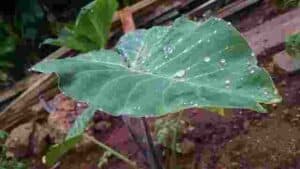
Elephant Ear Leaf Problems
Fungal Leaf blight
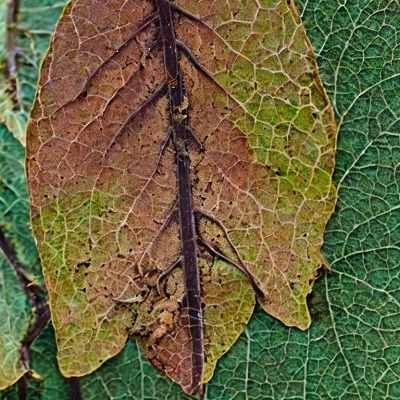
Fungal leaf blight is a common issue that frequently affects Elephant Ear Plants (Colocasia esculenta). It is characterized by the appearance of lesions on the leaves, which can cause them to turn yellow or develop a purplish color. The primary culprit responsible for this disease is Phytophthora colocasiae, a fungus that causes leaf blight.
The fungus infects the leaves, creating circular lesions that gradually grow in size. These lesions may exude a fluid that initially appears yellow but eventually dries up. In some cases, dark purple spots can also develop on the leaves, further exacerbating the infection. As the blight progresses, nearby leaves are also susceptible to developing spots.
One observable characteristic of fungal leaf blight is the presence of a white substance covering the infected areas of the leaves. This covering is an indication of fungal growth and infection. If left untreated, the infected leaves will progressively deteriorate, eventually withering and falling off the plant. If the infection is severe and goes untreated, it can spread to the lower parts of the plant, causing extensive damage.
To mitigate the impact of fungal leaf blight, it is crucial to implement proper disease management practices. This includes promptly removing and disposing of infected leaves to prevent the fungus from spreading. It is essential to ensure adequate air circulation around the plants and avoid over-watering, as excessive moisture can promote fungal growth.
Applying fungicides that specifically target the fungus causing leaf blight can be beneficial as a preventive measure or for treating existing infections. However, it is important to carefully follow the instructions provided by the manufacturer and use fungicides judiciously.
Regular monitoring and early detection of fungal leaf blight can significantly reduce its impact on Elephant Ear Plants. By implementing appropriate cultural practices and taking timely intervention measures, it is possible to minimize the occurrence and severity of this common fungal disease.
How to Fix:
To fix Fungal leaf blight, use a fungicide made from copper is the best treatment for this problem. It should be sprayed every week in the rainy season or other days you can pour in every 2 weeks. It can be used after you detect any such problem.
Also Experts believe that you need to pour water on roots not in Leaves it will help the plant to not get any of this issue in the first place.
Fungal leaf blight diseases can also be treated with Baking soda which contains bicarbonate soda that can be sprayed and best part is this is organic treatment and safe for the elephant ear plant.
Instructions:
- Taking 1/2 teaspoon of baking soda in 4 liters of water, this teaspoon would be 2.5-3 ml to be exact.
- Spraying it into the Leaves would work.
- Make sure to remove all the leaves that already have leaf spots.
- As you may encounter the fungus spreading to other plants quickly so cutting off such leaves would prevent the larger damage.
Quicker Solution: Find Leaves and Prune it as soon as you find fungal leaf blight lesions.
Spider Mites (White Spots)
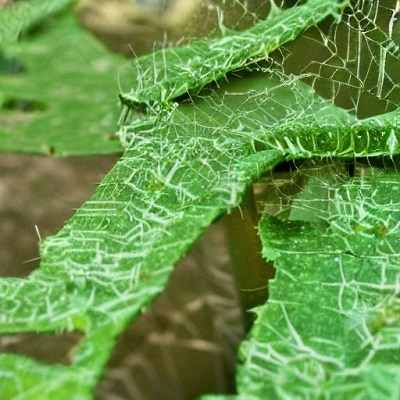
Spider mites are a common issue that Elephant Ear Plants (Colocasia esculenta) can encounter. These tiny arachnids often hide on the undersides of the plant’s leaves, causing damage and distress.
Spider mites, which belong to the Tetranychidae family, are not actual spiders but are closely related to them. Measuring less than 1 millimeter in size, they are difficult to see without magnification.
These pests typically seek refuge on the undersides of Elephant Ear Plant leaves, where they feed on the plant’s sap. Using their sharp mouthparts, spider mites puncture the leaf tissue and extract nutrients, leading to visible damage. As they feed, the spider mites create small yellow or white spots on the elephant ear leaves, which can merge and create a mottled appearance. Severe infestations may cause the leaves to turn yellow, brown, wither, and eventually fall off.
Spider mites reproduce rapidly, especially under favorable conditions. In warm and dry environments, their life cycle can be completed within a week. This quick reproductive cycle allows their populations to multiply quickly, leading to widespread infestations if not addressed.
Besides the visible damage, spider mites leave behind fine silk webbing on the affected leaves. This webbing serves as a protective barrier and aids in their colonization of the plant. The webbing becomes more noticeable as the infestation progresses, further detracting from the plant’s overall appearance.
Managing spider mites requires a comprehensive approach. Regularly inspecting the undersides of leaves is crucial for early detection. If spider mites are detected, several methods can be employed:
- Mechanical methods: Using a strong stream of water, gently spray the leaves to dislodge the spider mites and wash away the webbing. Consistency is key when using this method, and it should be combined with other control measures.
- Cultural practices: Maintain a healthy growing environment for the Elephant Ear Plant, avoiding over-fertilization, ensuring proper air circulation, and preventing water stress. Spider mites thrive in dry conditions, so maintaining adequate humidity levels can deter infestations.
- Biological control: Introduce natural predators of spider mites, such as ladybugs, predatory mites, or lacewings. These beneficial insects feed on spider mites and help reduce their populations.
- Chemical control: In severe infestations, insecticidal sprays or miticides may be necessary. Select products labeled for use on Elephant Ear Plants and carefully follow the manufacturer’s instructions to minimize any potential harm to the plant and beneficial insects.
Regular monitoring, early detection, and swift action are vital for effectively managing spider mite infestations on Elephant Ear Plants. By implementing integrated pest management strategies and maintaining a healthy growing environment, it is possible to prevent and control these troublesome pests, preserving the vitality and beauty of the plants.
How to Fix White Spots:
What you can do is use insecticidal soaps or Neel oil to prevent spider mites from coming back and it will solve the white spots problem. You can also try excess water on Colocasia leaves to do that but it’s not recommended as this creates another fungal problem on the leaf.
Phyllosticta Leaf Spot
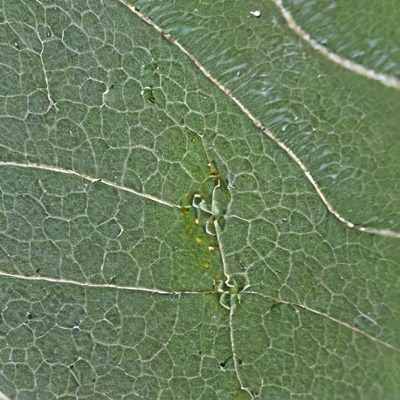
Phyllosticta leaf spot is a minor plant disease that can affect Elephant Ear Plants. It is characterized by the development of small lesions on the leaves, leading to discoloration and eventual leaf drop.
Caused by the fungal pathogen Phyllosticta spp., this disease begins as small, circular or oval-shaped lesions on the leaves of the Elephant Ear Plant. These lesions typically appear dark brown or black, creating a noticeable contrast with the surrounding healthy leaf tissue. Over time, the affected areas may expand and merge, resulting in more extensive discoloration. In some instances, a yellow halo may form around the lesions.
As the disease progresses, the affected leaves may weaken and eventually fall from the plant. This can lead to a reduction in foliage and impact the overall aesthetic appeal of the Elephant Ear Plant. However, it is important to note that Phyllosticta leaf spot is generally a minor disease and is not typically fatal to the plant.
Phyllosticta spp., the fungus responsible for this leaf spot disease, thrives in warm and humid environments. It typically enters the plant through wounds or natural openings, such as stomata, in the leaves. The fungus can also spread through contaminated tools or water splashes carrying fungal spores from infected plants.
To manage Phyllosticta leaf spot, various cultural and preventive practices can be implemented:
- Maintain good plant hygiene: Promptly remove and dispose of any infected leaves or plant debris to prevent the spread of the fungus.
- Ensure adequate air circulation: Provide sufficient spacing between plants to facilitate proper air movement. Improved airflow can reduce humidity levels and create an unfavorable environment for the fungus.
- Practice proper watering techniques: Avoid overhead irrigation and instead water the plants at the base. This helps prevent moisture accumulation on the leaves, which can promote fungal growth. Watering in the morning allows the leaves to dry quickly, reducing the risk of infection.
- Consider fungicidal treatments: In severe cases, fungicides specifically labeled for use on Elephant Ear Plants can be applied to protect healthy foliage. It is important to carefully follow the instructions provided by the manufacturer and apply the fungicide at the recommended times.
Regular monitoring of Elephant Ear Plants for any signs of Phyllosticta leaf spot is essential. Early detection enables timely intervention, minimizing the impact of the disease on the plant’s health and appearance. By implementing proper cultural practices and taking preventive measures, it is possible to reduce the occurrence and severity of Phyllosticta leaf spot, promoting the vitality of Elephant Ear Plants in the garden or landscape.
How to Fix:
You can prevent this issue by adequate watering and if your elephant plant is already caught in this disease then try pruning off that leaf so the disease doesn’t spread.
Elephant Ear Leaf Problems include leaf spot, Pythium rot and leaf blight are more problematic than this Phyllosticta Leaf Spot as this is not a major issue that made the plant die.
Bacterial leaf spot
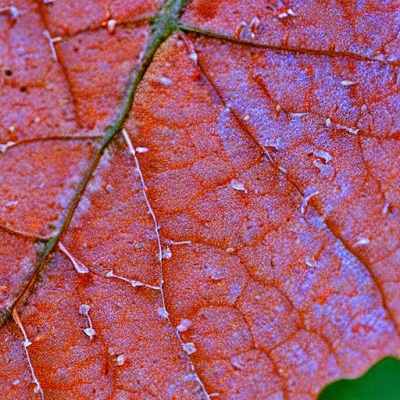
Bacterial leaf spot is a common problem that can affect Elephant Ear Plants. This plant disease is characterized by the development of brown spots on the leaves, which are easily noticeable.
When Elephant Ear Plants are infected with bacterial leaf spot, small brown spots appear on the leaves. These spots may start as tiny dots and gradually increase in size. They often have a water-soaked appearance and can be darker brown or black. The spots may have irregular shapes and are typically surrounded by a yellow halo.
One distinctive characteristic of bacterial leaf spot is the presence of lesions that have a wet or greasy appearance. The spots may be slightly raised and have a shiny surface. Over time, the infected leaves may wilt, droop, or become distorted. Severe infections can even lead to defoliation.
Bacterial leaf spot is primarily caused by various bacterial pathogens, such as Xanthomonas and Pseudomonas species. These bacteria can enter the plant through natural openings, wounds, or contaminated tools and equipment. They thrive in warm and humid conditions, making Elephant Ear Plants particularly susceptible in environments with high moisture levels.
Controlling bacterial leaf spot involves a combination of preventive measures and cultural practices. Here are some strategies to help manage this disease:
- Sanitation: Remove and destroy any infected leaves or plant debris immediately to prevent the bacteria from spreading. Clean gardening tools and equipment thoroughly to avoid cross-contamination.
- Watering practices: Avoid overhead irrigation and water the plants at the base to minimize moisture on the leaves. Watering in the morning allows the leaves to dry quickly and reduces the favorable conditions for bacterial growth.
- Improve air circulation: Proper spacing between plants promotes better air movement and ventilation, which helps reduce humidity levels and create an environment less conducive to bacterial leaf spot.
- Avoid excessive fertilization: Overfertilization can promote lush growth, making plants more susceptible to bacterial infections. Follow recommended fertilization practices and avoid excessive nitrogen application.
In severe cases or when the infection is widespread, chemical control measures can be considered. Copper-based fungicides or bactericides labeled for bacterial leaf spot control can be applied following the manufacturer’s instructions. It is important to exercise caution and follow safety guidelines when using these products.
How to Fix:
Same way it can be solved with fungicide having copper. The best time to use is when you detect this problem so it can be solved in early days. You can change the location else it will also cause other plants to have this same type of bacterial infection.
Thrips
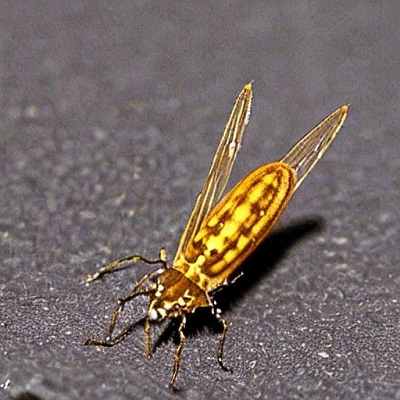
If the Elephant Ear Plant leaves display distortion, spots, yellowing areas, and black spots, it may indicate the presence of thrips. Thrips are small, slender insects that can cause damage to plant foliage. While Elephant Ear Plants primarily feed on fungal spores found on leaves, they can attract thrips if they grow tall in a landscape setting. Thrips prefer warm or cool environments and can survive under various conditions.
Thrips feed by piercing the plant tissues and extracting sap, resulting in distorted growth and leaf damage. Their feeding activity can lead to the formation of silver or bronze-colored spots on the leaves. Over time, these spots may turn yellow or brown, and in severe cases, black spots may develop due to the accumulation of their excrement.
Aside from physical damage, thrips can also transmit plant diseases. They can carry and spread viruses, such as Tospoviruses, which can further impact the health and well-being of affected Elephant Ear Plants. These diseases can cause additional symptoms, including stunted growth, wilting, and mottled or discolored leaves.
To manage a thrips infestation and minimize associated damage, several approaches can be taken:
- Cultural practices: Implement good plant hygiene by removing and disposing of any infested plant material. Regularly clean up fallen leaves or debris near the plants, as thrips can overwinter in these areas.
- Physical barriers: Consider using fine mesh or row covers to prevent thrips from accessing the plants. This can be particularly effective for young or recently transplanted Elephant Ear Plants.
- Natural predators: Encourage the presence of beneficial insects that feed on thrips, such as predatory mites, ladybugs, lacewings, and parasitic wasps. These natural predators can help control thrips populations.
- Insecticidal treatments: In severe infestations, insecticides specifically labeled for thrips control can be used as a last resort. It is important to select products that are safe for Elephant Ear Plants and carefully follow the manufacturer’s instructions. Consider using targeted insecticides that specifically address thrips, as broad-spectrum insecticides can harm beneficial insects and disrupt the ecosystem’s balance.
Regular monitoring and early detection of thrips can enable timely intervention and minimize the damage they cause to Elephant Ear Plants. By implementing integrated pest management practices, maintaining good plant hygiene, and utilizing natural controls, it is possible to effectively manage thrips infestations and ensure the health and vitality of the plants.
How to Fix:
You can use Insecticidal soap , Neem oil also works. For Higher infestation you can directly use any pesticide to control its population.
Did you know thrips are one such pest that is common in gardens and outdoor grasses. These thrips like to have a taste of juices filled inside the fruits or plants and leave spots, Leaves may become dried, pale, change color to brown and die back.
Not only elephant ear, if you want to get rid of thrips, first remove the grasses, weeds grown outside. This way you may prevent them from staying too long in the garden or lawn.
Also If you check all your houseplant and regularly monitor them about pests then it could save your plant from getting any damage with that you would be focusing on the watering schedule.
Although I have already suggested the pesticide for thrips in elephant ear plant, you can also take home predatory thrips that eat the eggs of those tiny insects and larvae. It may help to reduce the numbers of thrips in the garden.
Thrips many times sitting on plant’s Leaves and flower in that case pruning would be the best option you can have and cut off those stems/leaves that are diseased or damaged. Most people who have healthy plant gardens do pruning very often to keep the new growth coming and older ones should be eliminated.
If you’re looking for tips on how to fix an Elephant Ear Plant Broken Stem, check out this helpful guide.
Pythium Rot
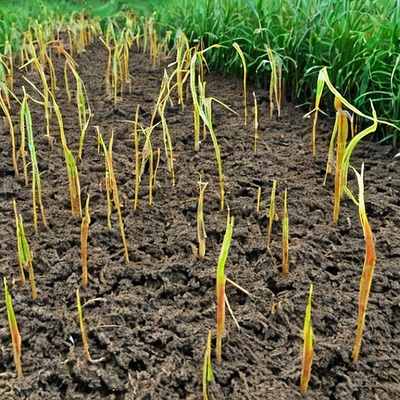
Pythium rot is a highly destructive disease that poses a significant threat to Elephant Ear Plants. Unlike a fungus, Pythium is a parasitic organism that exhibits fungus-like behavior by spreading in wet soil conditions. This disease, also known as water rot, thrives in irrigated environments and is particularly detrimental to the overall growth and health of the plant.
When Pythium rot infects an Elephant Ear Plant, it can result in a rapid decline of the entire plant. The symptoms of Pythium rot include wilting, yellowing of the leaves, and a general deterioration in the plant’s vigor. One noticeable characteristic is the plant’s wet and damp appearance, as the rotting process progresses.
The root system is the primary target of Pythium rot. The disease attacks the roots, leading to their decay and rotting. In severe cases, the rotting can extend to the surrounding soil layer. As a consequence, the plant’s ability to absorb water and nutrients is compromised, ultimately causing the plant to die.
The risk of Pythium rot is highest in areas with excessive moisture or poor drainage, such as overwatered or waterlogged soils. Overwatering and inadequate soil drainage create the ideal conditions for Pythium to thrive. Additionally, Pythium can be introduced to the plant through contaminated soil, tools, or infected plant material.
To effectively manage Pythium rot and prevent its spread, several strategies can be implemented:
- Proper watering practices: Ensure that the Elephant Ear Plant is watered appropriately, allowing the soil to partially dry out between watering sessions. Avoid overwatering or allowing the plant to sit in waterlogged conditions.
- Improve soil drainage: Enhance soil drainage by incorporating organic matter, such as compost, into the soil. This amendment helps promote better water infiltration and prevents water from pooling around the roots.
- Sanitation: Remove and dispose of any infected plant material or debris promptly to minimize the chances of spreading the disease. Thoroughly clean and disinfect gardening tools and equipment to prevent contamination.
- Fungicidal treatments: In severe cases, fungicides specifically labeled for Pythium control may be applied. Consult with local experts or agricultural extension services for recommendations on suitable fungicides and their proper application.
Preventing Pythium rot is crucial, as managing the disease once it has established itself can be challenging. By adhering to proper cultural practices, improving soil drainage, and maintaining appropriate watering practices, the risk of Pythium rot can be minimized. Regular monitoring and prompt action are key to preserving the health and vitality of Elephant Ear Plants in the face of this destructive disease.
How to Fix:
You should check your water as this may be contaminated , make sure to give clear water to plants and avoid any Pythium rot problem. Newly seedling can be affected in early stages also.
If you want to buy this plant below are links to buy it.
Buy Elephant Ear plant From ETSY(recommended)
Other Problems
Elephant Ear Leaves getting smaller
The Leaves on your Alocasia are getting smaller due to is low light. Alocasia plants require strong, indirect light to flourish. Without it, their growth may decrease and their leaves may shrink. Underwatering is another reason. Alocasia leaves may droop and shrink if they don’t receive enough water. Overwatering is another issue. Root rot caused by moist soil may shrink and discolour plant leaves.
How to Fix:
The plant may be lacking nutrients. Fertilize the soil if your Alocasia Leaves are shrinking. Here is the best fertilizer for elephant ear plant.
Pot-bound Alocasias may not have enough area to develop and generate bigger leaves. If so, repot the plant.
Check your Alocasia plant’s water, light, and nutrients frequently. To promote development, cut yellow or damaged leaves. Care for your Alocasia to help it grow big, robust leaves and flourish in your home or yard.
Elephant Ear Leaves turning yellow and brown
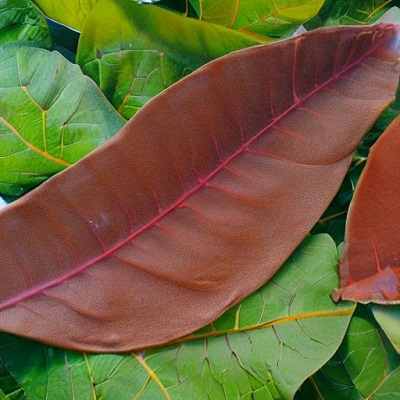
If Leaves on your elephant ear plant turning yellow or brown it may be due to over or under-watering, insufficient sunlight, and low humidity levels. Overwatering or underwatering may make Leaves yellow or brown. Watering frequency is another consideration for discoloured elephant ear plants. Over- or under-watering may cause plant leaves to develop yellow patches before becoming yellow.
Insufficient sunshine may cause elephant ear plant leaves to become yellow. Elephant ear plants need strong, indirect light otherwise their foliage may turn yellow or brown. If its container is too tiny, your elephant ear plant may not obtain enough nutrients to produce strong leaves.
Low humidity may make elephant ear plant leaves yellow or brown. If your house or yard has low humidity, these plants’ leaves may dry up and become yellow or brown.
How to Fix:
Avoid yellow or brown elephant ear plant leaves by over watering, lighting, and humidifying it. Make sure the dirt drains and the container is big enough for the plant. You can keep your elephant ear plant healthy for years by taking care of it.
Elephant Ear Plant soft stem
Elephant Ear leaves has soft stem due to lack of water. Elephant ears’ stalks droop and soften without enough water. Water Elephant Ear plants when the top inch of soil is dry.
Overwatering causes stem rot, which softens Elephant Ear stems. Fungi that decay the plant’s stem may grow in moist soil. If your Elephant Ear plant has a mushy stem, check soil moisture and water appropriately.
How to Fix:
Elephant Ear plants with fragile stems may have poor soil quality. The plant might grow weak and drooping if the soil lacks nutrients or drains poorly. A well-draining, organic-rich soil mix promotes healthy development and prevents root rot.
Elephant Ear plants may develop mushy stems from poor illumination. The plant’s stem and leaves may grow narrow and delicate without adequate light. Elephant Ear plants need bright, indirect light. Give your plant enough light.
Elephant Ear leaves droop and soften in cold weather. Tropical plants like warm temperatures. Temperatures below 60°F may stress and weaken plants.
Overwatering, poor soil quality, insufficient sunlight, and low temperatures are the main reasons of Elephant Ear plant soft stems. Make sure your plant has well-draining soil, nutrition, light, and warmth. With appropriate care, your Elephant Ear plant should recover from its soft stem and flourish again.
Should I cut off yellow elephant Ear Leaves
Yes, you can cut off yellow elephant ear leaves because Pruning is essential for the health and growth. Elephant Ears need pruning to thrive.
Sharp blades clip drooping leaves. This will not hurt the plant and may promote growth. Cut off fading or brown leaves at the stem. Disinfect the blade after each cut to avoid illness. This will provide more energy for leaf growth.
Your Elephant Ear plant’s yellow leaves indicate nutrition, water, and sunshine deficiencies. Cutting off these dead leaves can assist the plant’s energy flow to other sections that require it. Pruning improves airflow and prevents pests and illnesses.
Cut golden leaves at the stem. This protects nearby healthy leaves. Don’t worry about your Elephant Ear plant’s yellow foliage. Older leaves die naturally. Simply watch your plant and remove any yellow or brown leaves.
Elephant Ear plants need trimming. It promotes development, prevents illness, and beautifies your plant. Cut off any yellow or brown leaves on your plant. Elephant Ear plants appreciate it!
Tiny bugs on elephant ear plant
One common pest that affects elephant ear plants is tiny green aphids. Green aphids—also called plant lice—suck plant fluids and excrete honeydew. Aphid infestations discolour and wilt leaves, stunting growth. Elephant’s ear leaves have aphid colonies.
How to Fix:
To avoid additional harm, remove little bugs from your elephant ear plant immediately. To prevent pests from spreading, isolate the plant first. Examine the plant and determine the pest. Soap and water may kill green aphids. Spray the undersides of the leaves with a spray bottle with a few drops of dish detergent and water. This will suffocate aphids and inhibit reproduction.
Insecticidal soap or neem oil are natural and efficient green aphid remedies. These products dehydrate and kill bugs by destroying cell membranes. Some items might be hazardous if not used properly, so follow the label directions.
Elephant ear plant pest prevention is crucial. To achieve this, give the plant enough water, nutrients, and light. Water the plant just until the top inch of soil is dry to avoid creating a pest-friendly environment. Additionally, avoid putting the plant in direct sunlight, since this may cause the leaves to burn and become more prone to bugs.
Elephant ear plant holes in leaves
Most common reason for elephant ear plant with holes in the leaves is due to insects like squash bugs, beetles, sawfly caterpillars, slugs, cutworms, aphids, grasshoppers. Holes on the edges or inside the leaves can be insect problems that can be solved by spraying insecticide.
Elephant leaves that are already damaged with holes can’t be reversed but you can treat this with horticultural oil.
You can also use bonide and monterey so can’t compare it depends how much you want to use it. For Heavy insect infestation you need 1 gallon otherwise go for 32 oz.
Most common reason for Elephant ear plant with holes is due to slugs as they feed the foliage at night, that’s why they often have no trace. larger slugs try to make bigger holes but smaller ones create lines, catchy choppy holes inside the leaves that you can clearly see. Elephant ear plant holes causing slugs can be removed using insect spray. I would recommend you use this Garden Safe Slug & snail bait for slug problem which is so helpful and easy to use.
Elephant ear Turning white
White spots on elephant ears – Most common reason for an elephant ear turning white is due to chlorosis, meaning when a plant can’t produce its normal green color due to lack of chlorophyll it results in leaves turning white, yellowish. When your ear plant is not getting enough sunlight to make food then it will change color. To fix white leaves just make sure your elephant plant is getting enough sunlight by moving its place to a more bright light area indoors or check if sunlight is getting blocked or shaded by other houseplants or by a tree.
All Seasons Horticultural Oil/Insecticide
Horticultural Oil Concentrate Insecticide
FAQ’s
Why is my elephant ear dying?
Major reason for elephant ear dying is root rot and you might yellowing of leaves and fall. To prevent this if you grow this on a small pot change that, secondly repot it and cut the roots which are rotted. You can spray water and don’t need to pour plenty of water as this creates soggy soil. You can also use fertiliser that could be all purpose and spray on every 13-15 days. Also Try this solution – Make sure soil dries to the top about 1 inch left then do watering and see the result.
Why are the leaves on my elephant ear plant turning yellow?
There are 2-3 answers to the leaves problem but the most common reason for elephant ear plants to turn yellow is because of either over-water and no sufficient bright light. Try to give them less water and change the location to more bright light, use of plant food can solve this problem it has nutrient deficiency. Or If it is in dormant season then don’t worry it will grow back next time.
Wrap Up
I Hope you get the solution by reading all the problems I provided on “Elephant Ear Leaf Problems”, If you want to see other posts please check below.
Also Read :
Jacob’s Ladder Plant – Full Guide Growing Caring(Polemonium caeruleum)
Japanese blood grass – How to Grow & Care (Imperata cylindrica) – Guide
